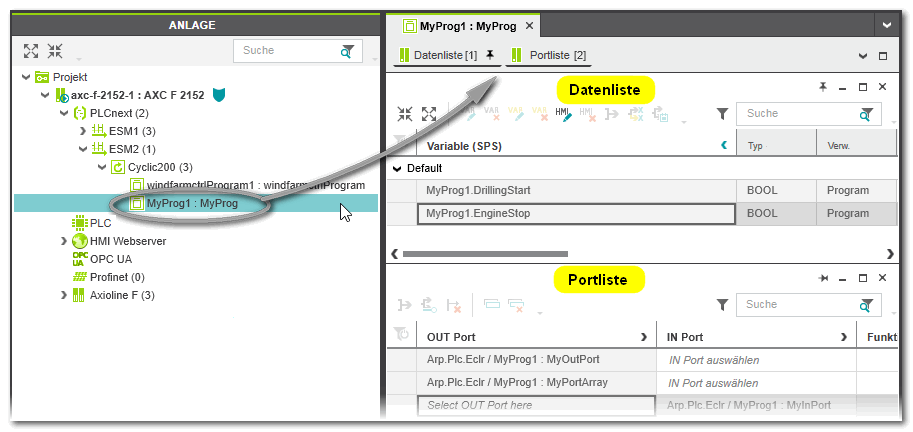GDS Port Lists
For controllers of the PLCnext Technology generation, input and output ports can be used in addition to or instead of resource-global variables. Programs communicate using ports, i.e., data can be read from and written to programs via ports.
Ports are listed in GDS Port Lists instead of Data Lists. These ports are either declared in a local program POU with one of the keywords 'IN Port' or 'OUT Port' or they are part of and handed over from instantiated external programs. IN and OUT ports can be assigned (mapped) to each other.
This way, data can be transferred between IEC 61131-3-compliant programs developed in the current project and non-IEC 61131-3 programs (developed in C++, for example) which are instantiated in a task.
The port properties cannot be edited here and it is not possible to create new ports. Creation of ports is possible in the variable table of program POUs.
GDS Port Lists are available on the following PLANT nodes:- 'PLCnext' node: the list contains all ports available on the controller.
- Program instance nodes: the list only contains ports of the current program.
If a program instance also contains instance-related I/O variables, additionally a Data List is available. Refer to the following example.
 Example for a program instance with instance-related I/O variables and PLCnext ports
Example for a program instance with instance-related I/O variables and PLCnext ports
Structure of the GDS Port List
A GDS Port List shows all input and output ports of the node for which it was opened.
When opening a GDS Port List, the roles may be displayed collapsed, i.e., the properties are hidden. Click the  icon of the role you want to expand. The
icon of the role you want to expand. The  icon collapses the role again.
icon collapses the role again.
The current view is then stored when closing the GDS Port List. See section "Hide/show details of variables/process data items" for details.
Example:


